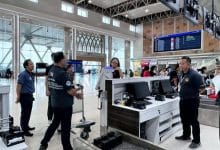Thailand’s railway safety upgrade: 693 unauthorised crossings to be rerouted

In the aftermath of a tragic accident last week in Chachoengsao, where a freight train collided with a pickup truck at an unrecognised railway crossing, taking eight lives and injuring three, the State Railway of Thailand (SRT) resolved to close 693 unauthorised railway crossings across Thailand.
The accident took place on an unauthorised crossing, lacking official signalling mechanisms. Of the 437 incidents involving trains that transpired between 2005 and 2021, SRT data indicates that 44% occurred at illegal crossings.
Tayakorn Chandrangsu, SRT Director of Safety and Maintenance, yesterday revealed that Thailand’s 4,000-kilometre railway network boasts 2,697 level crossings. Some 2,004 of these have the official stamp of approval while 693 do not. The unauthorised crossings due for closure are distributed unevenly across the country, with 52 in the north, 54 in the northeast, 68 in the east, and 519 in the south.
Chandrangsu stated the persistence of locals in utilising these unauthorised railway crossings as they usually provide the most direct and convenient route to their chosen destination.
The SRT previously urged each province to formulate effective solutions to reduce accidents at level railway crossings, but the outcome has been unsatisfactory and underwhelming, according to Chandrangsu.
In discussions about preventative measures taken by the SRT, he mentioned the closure of some illegal railway crossing points, which however led to protests from residents. Despite the closure, locals would find ways to reopen these passages.
In addition to plans for shutting down illegal railway crossings, the SRT intends to construct additional walkways around the rail network, primarily in communities bisected by railway tracks. Encouraging the use of the DRT’s Crossing Application app, which allows users to flag issues with local crossings, is another measure on the agenda, reported Bangkok Post. Chandrangsu said…
“All our efforts lead towards one end: fewer ground-level crossings. We will endeavour to employ more such crossings as part of our double-track expansion and high-speed railways to minimise accidents.”
Latest Thailand News
Follow The Thaiger on Google News:


























